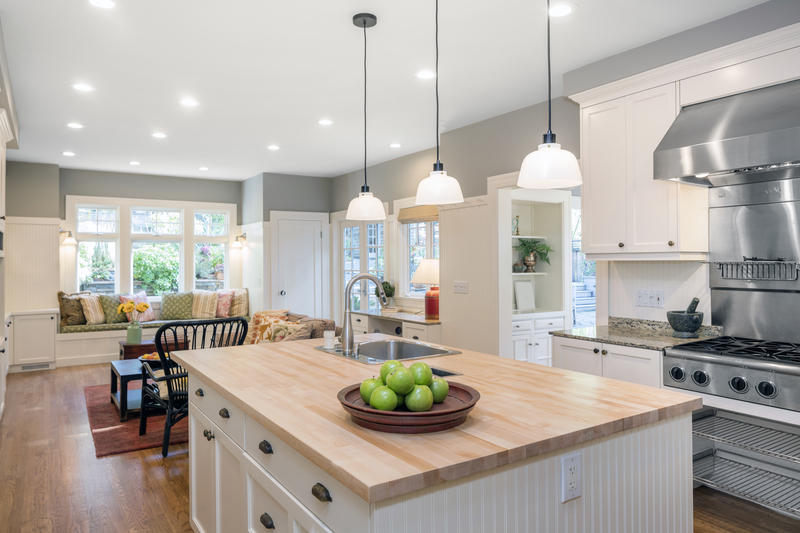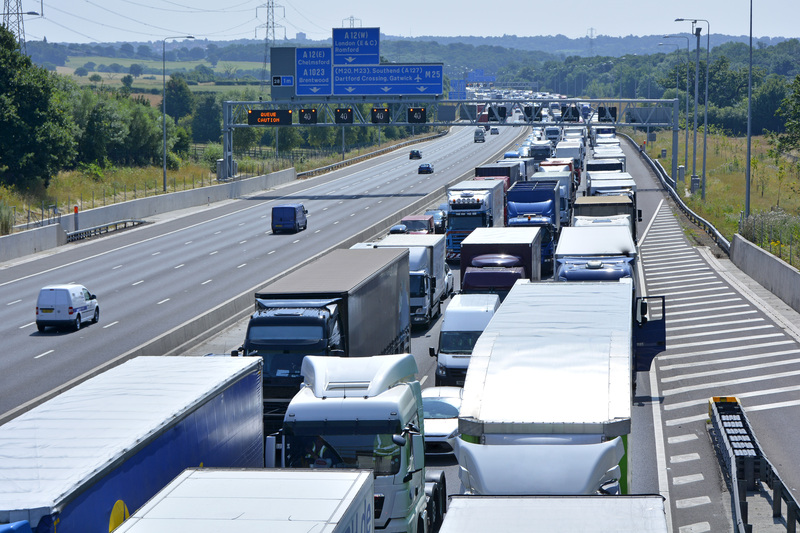The Declutter-First Approach: Transitioning to Your New Home
Posted on 11/06/2025
The Declutter-First Approach: Transitioning to Your New Home
Moving to a new home is a landmark life event, but it can also be overwhelming. The secret to a smoother transition? Adopt the declutter-first approach. By thoroughly decluttering before packing or relocating, you ensure a fresh, organized start in your new space. In this comprehensive article, you'll discover why the declutter-first method is vital for new homeowners, step-by-step strategies to implement it, and tips for a seamless, stress-free move.

Why Embrace the Declutter-First Approach?
If you're still uncertain about the benefits of decluttering before moving, consider these compelling reasons:
- Save time and money: Fewer items to move mean lower moving costs and less effort packing and unpacking.
- Reduce stress: Letting go of clutter simplifies decision-making and helps you start fresh.
- Organize smarter: Transitioning to your new home with only what you need means less chaos and more organization from day one.
- Maximize space: Unnecessary items can cramp your new home's style. Decluttering allows your space to breathe and flourish.
- Emotional refresh: Parting with unnecessary possessions can be deeply liberating, offering a renewed sense of clarity.
Ultimately, the declutter-first approach transforms the entire moving experience--from a daunting task into a liberating journey.
What is the Declutter-First Approach?
The declutter-first approach is a proactive strategy to reduce belongings you no longer want or need before your move. Rather than packing everything and sorting at your new home, you edit your possessions in your current space. This ensures you only bring items that genuinely add value to your life, keeping your new home clutter-free from day one.
Declutter Before Packing: The Golden Rule
Decluttering before you pack is far more efficient than the alternative. Packing unnecessary items wastes time, space, and money, and often perpetuates clutter in your new surroundings.
Preparing for Decluttering: A Step-by-Step Guide
Ready to start the journey to a lighter, brighter new home? Follow these steps:
1. Set Clear Decluttering Goals
- Define your vision: How do you want your new home to feel and function?
- Set a timeline: Break the decluttering process into manageable stages, aligning them with your move-in date.
- Create a checklist: List each room and major category that needs attention (clothes, kitchenware, books, etc.).
2. Assemble Supplies
Before you begin, gather essential materials:
- Sorting bins/boxes: Label as Keep, Donate, Sell, Recycle, and Trash.
- Trash bags: For easy disposal of non-recyclable waste.
- Labels and markers: To keep everything organized as you go.
- Cleaning products: Wipe surfaces as you declutter, ensuring items are ready for boxing and your home is clean for the next occupant.
3. Tackle One Space at a Time
Decluttering room by room keeps momentum high and stress low. Popular order of operations:
- Start with least-used rooms: These typically have items you use less and are easier to purge quickly.
- Progress to main living areas: You'll gain decluttering experience and confidence as you tackle bigger challenges.
Decluttering Essentials: Room-by-Room Tips
Decluttering the Bedroom
- Clothing: Sort by season and frequency of use. If you haven't worn it in a year, let it go.
- Accessories: Pare down shoes, bags, and jewelry--keep only what you truly use and love.
- Furniture: Will your old bed frame or dresser fit the new home's style and space?
Decluttering the Kitchen
- Purge duplicates: How many spatulas do you really need? Keep only the best quality and most necessary items.
- Check expiration dates: Toss or recycle expired pantry goods, sauces, and spices.
- Appliances: Donate or sell gadgets you rarely use or that won't fit your new kitchen.
Decluttering the Living Room
- Media: Digitize old DVDs, games, or CDs and recycle/sell the physical copies.
- Decor: Does the art and decor suit your new home, or is it time to refresh?
- Books: Only keep favorites, reference materials, or those with sentimental value.
Decluttering the Bathroom
- Personal care products: Dispose of half-used, expired, or unwanted toiletries and cosmetics.
- Towels and linens: Donate any excess or worn-out items.
Decluttering the Garage, Basement, or Attic
- Tools and equipment: Only keep what you use regularly. Donate or sell the rest.
- Holiday decor: Evaluate if each set of decorations truly brings you joy or is simply taking up space.
- Stored boxes: Open every box and critically assess its contents before moving them to your new home.
Make Tough Decisions: What to Keep, Sell, Donate, or Toss?
One challenge of decluttering before a move is emotional attachment. Use the following guidelines to make the process easier:
- Keep: Items you use regularly, cherish, or will definitely need in your new home.
- Sell: High-value or gently used items you don't want. List them online or host a garage sale for extra moving cash.
- Donate: Gently used but low-sale-value items can benefit local charities.
- Toss: Broken, damaged, or expired items that cannot be sold or donated.
For sentimental items, consider photographing keepsakes before parting with them. You'll keep your memories without the physical clutter.
How to Stay Motivated During Decluttering
Decluttering can be intense and emotionally taxing. Stay motivated by:
- Reminding yourself of your goals: Visualize your future home--organized, airy, and stress-free.
- Celebrating milestones: Reward yourself each time you finish a room or major category.
- Enlisting help: Recruit friends or family for support and accountability.
- Making it fun: Play music or turn it into a timed challenge to keep energy levels high.
Eco-Friendly Decluttering Tips
The declutter-first approach for moving homes can also be kind to the planet:
- Recycle responsibly: Electronics, batteries, old textiles, and packaging often require special recycling. Research local drop-off programs.
- Donate locally: Shelters, community centers, or thrift stores are often grateful for household goods, furniture, and clothes.
- Repurpose: Get creative--old t-shirts make great cleaning rags, mason jars become organizers, and so on.
Packing What You Love: After Decluttering
With only your favorite and most useful possessions left, packing for your move will be much less stressful. A few additional packing tips:
- Group like items: Keep kitchenware, books, and linens together for easier unpacking.
- Label everything: Clearly mark boxes by contents and destination rooms.
- Keep essentials accessible: Pack a day-one box with toiletries, a change of clothes, snacks, and important documents.
- Protect fragile items: Use plenty of padding and mark boxes as "fragile" to avoid breakage.
Employing the declutter-first strategy makes your packing process methodical and efficient, ensuring every box is worth its transport.
Benefits of Arriving with Less: Transitioning to Your New Home
Completing your move after a thorough declutter-first process offers incredible advantages as you settle in:
- Quicker unpacking: Fewer items make it easy to put everything away and achieve a tidier home faster.
- Easier organization: Uncluttered spaces are far simpler to set up and maintain.
- New design possibilities: With less "stuff," you have more freedom to reinvent your space with new layouts and decor.
- Improved well-being: A clutter-free environment reduces stress and improves focus, productivity, and peace of mind.
Celebrate Your Fresh Start!
Take time to enjoy your new, simplified space. The effort you put into the declutter-first approach ensures a more comfortable, functional, and harmonious home for you and your family.
Additional Decluttering and Moving Tips
- Start early: Give yourself at least two months before your move to declutter thoroughly.
- Be honest with yourself: If an item's main role is to collect dust, it's time to part ways.
- Don't skip paperwork: Sort and shred old bills, statements, and documents you no longer need.
- Limit nostalgia traps: Avoid spending hours reminiscing--make decisions and keep moving forward.
- Use checklists: Tracking your progress keeps you on course and reduces last-minute panic.

Common Decluttering Mistakes to Avoid When Moving
- Procrastinating: Waiting until the last minute turns decluttering into a panic.
- Packing everything: If you box up clutter to "deal with later," you're only shifting the problem.
- Skipping categories: Don't ignore things like linens, seasonal items, or garage contents.
- Hoarding for "just in case": Be realistic about what you will actually use in your new space.
Conclusion: Make Your Move Joyful with the Declutter-First Method
Transitioning to your new home with the declutter-first approach is a transformative and empowering process. By minimizing what you own, you simplify not only your move but the next chapter of your life. Declutter before you pack, and you'll arrive at your new home with only the possessions that truly matter. It's the best way to guarantee a smooth move, an organized home, and a peaceful mind. Start today--and step confidently into your fresh, clutter-free future!
```


 Guide price for the hire of a Transit Van /up to 300 cu ft/.
Guide price for the hire of a Transit Van /up to 300 cu ft/.